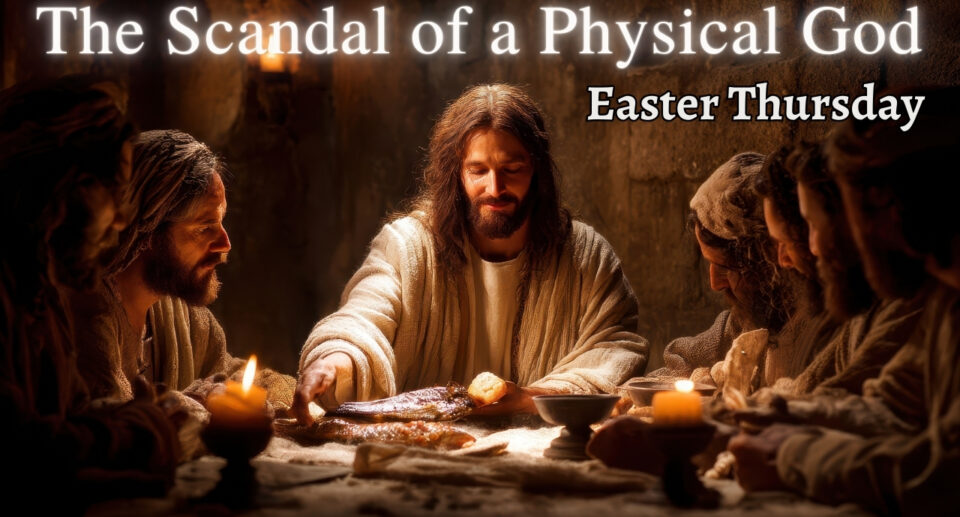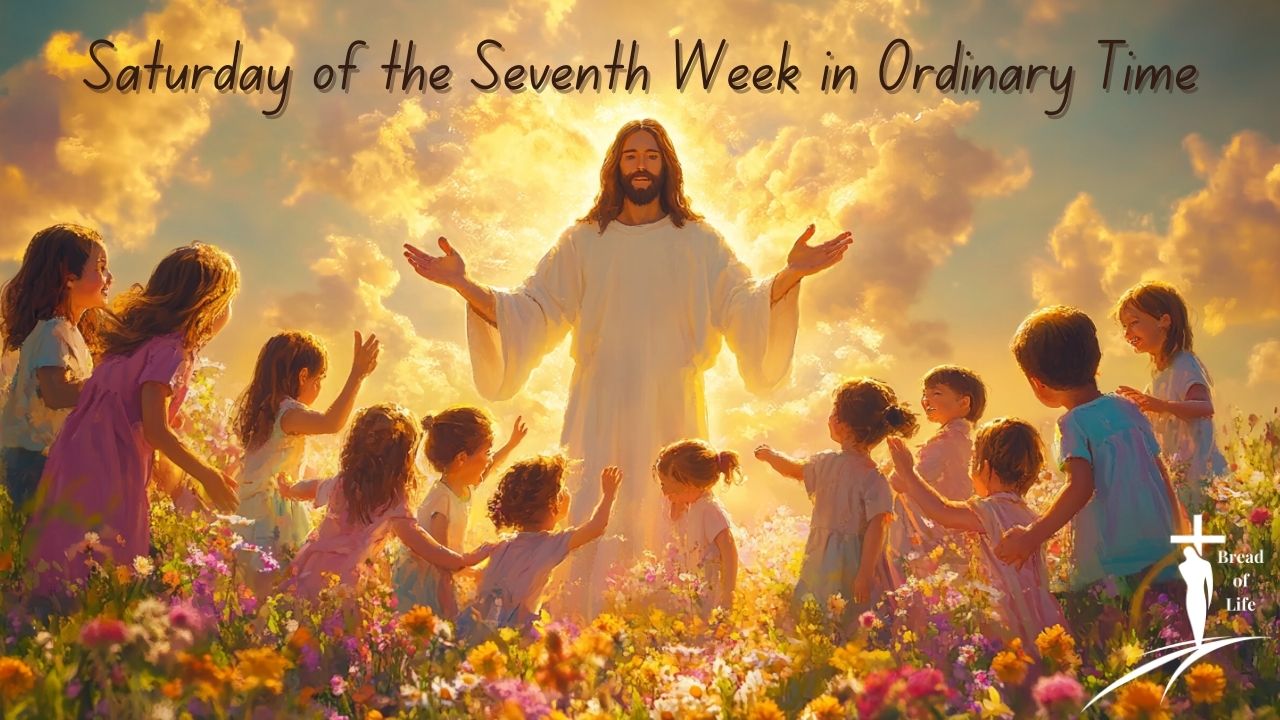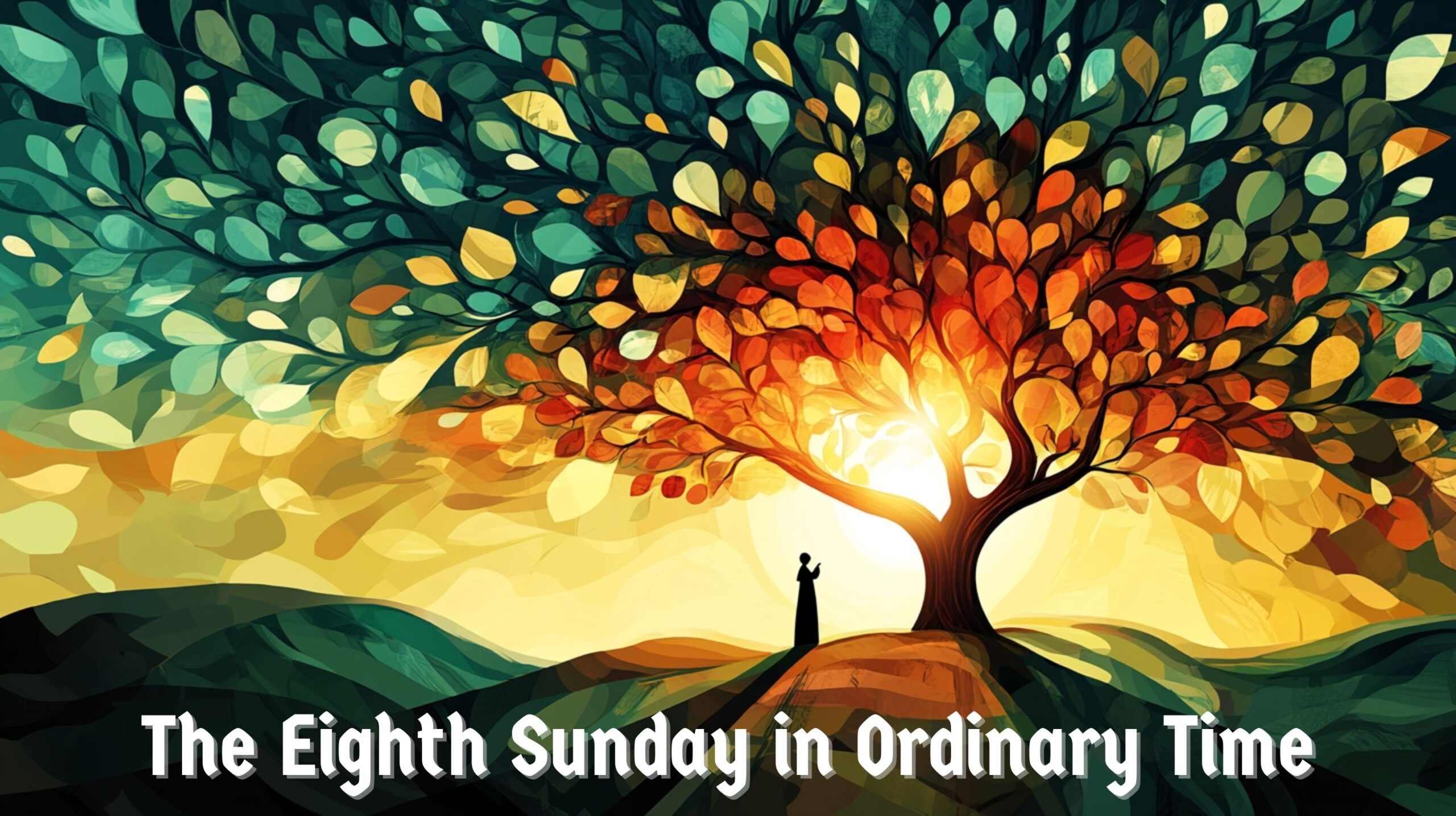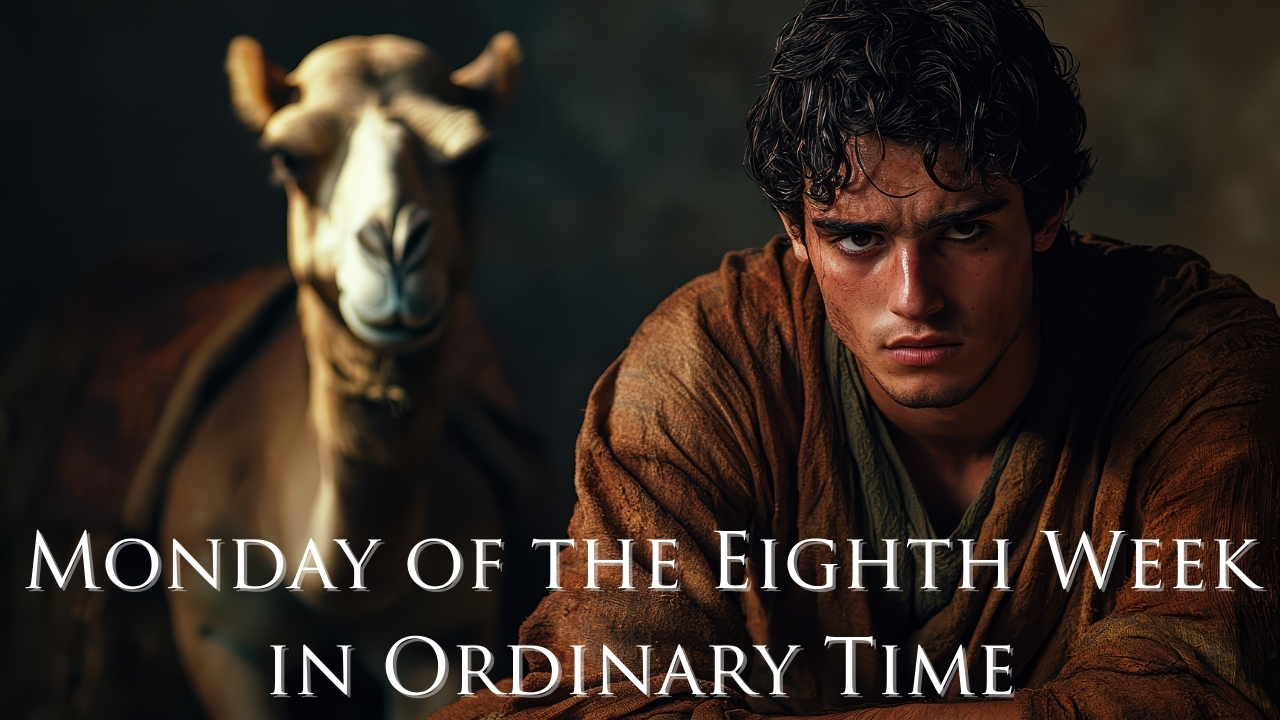From Limping to Leaping: Encountering the Risen One | Easter Wednesday Readings | April 23, 2025
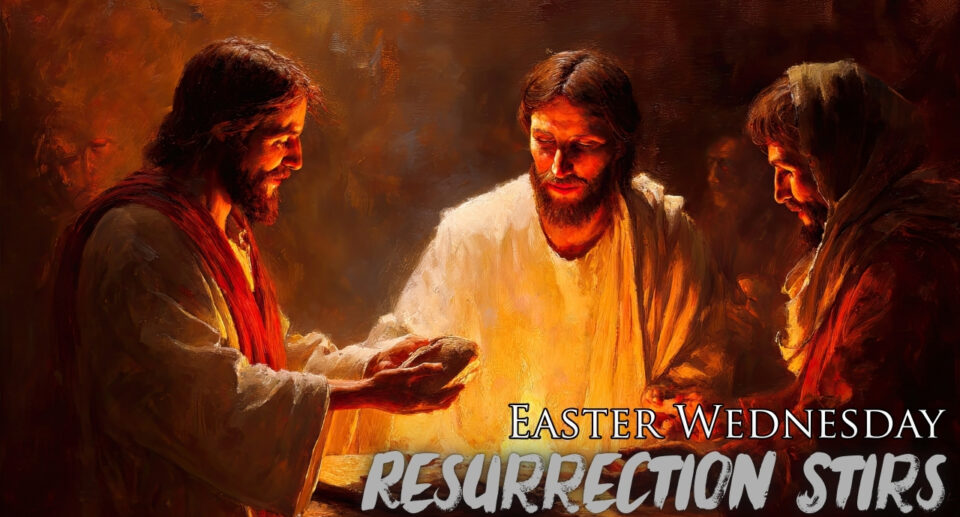
A man who never walked suddenly leaps. Downcast disciples discover their companion is Christ himself. Today’s readings reveal how Easter isn’t just history but ongoing encounter with the risen Jesus who still transforms our limitations.
Through this reflection, you’ll discover:
- Why we often mistake Jesus for someone else in our daily encounters
- How your greatest limitations might become sites of resurrection power
- What happens when scripture interpretation meets personal experience
- Why genuine encounter always generates movement and testimony
Readings covered: Acts 3:1-10; Psalm 105; Luke 24:13-35
#EasterOctave #RoadToEmmaus #ResurrectionPower #PersonalTransformation #EasterWednesday
From Limping to Leaping: Encountering the Risen One on the Road
He sat there every day, the man born lame. Same spot. Same routine. Same begging bowl. After decades, even hope becomes habitual—a reflexive request without expectation.
“Alms for the poor?”
Most passersby tossed coins without looking. Some muttered prayers. Others averted their eyes completely. Decades of the same script, the same limitations, the same spot outside the Beautiful Gate—close enough to the temple to receive charity, too ritually unclean to enter.
Until Peter and John.
“Look at us,” Peter said.
The man looked up, expecting silver or gold.
“I have none of that,” Peter continued. “But what I do have I give you: In the name of Jesus Christ the Nazorean, rise and walk.”
Peter grasped his hand. Strength surged through useless ankles. And the man who had never walked leapt to his feet—not just standing, not just walking, but “leaping and praising God.”
Limitation transformed to liberation. Sitting became soaring. The edge of the temple became the center of testimony.
On the same day, a few miles away, two disciples trudged the road to Emmaus. Their faces downcast, their hopes crushed, their futures uncertain. Like the lame man, they too were stuck—not physically but spiritually. Their expectations had calcified around a messiah who would redeem Israel politically, not die on a Roman cross.
A stranger joins them. “What are you discussing as you walk along?”
They stop, astonished at his ignorance. “Are you the only visitor to Jerusalem who does not know the things that have taken place there in these days?”
The stranger doesn’t answer directly. Instead, he begins interpreting Moses and the prophets, showing how the Messiah had to suffer before entering glory. Their hearts burn within them, yet recognition eludes them.
Then at dinner, the stranger takes bread, blesses it, breaks it, and gives it to them. Their eyes open. It’s Jesus himself! But the moment they recognize him, he vanishes from sight.
These two resurrection appearances—the lame man’s healing and the Emmaus encounter—reveal a crucial truth: Easter isn’t just a historical event. It’s an ongoing experience of the risen Christ who still transforms limitations, still walks alongside the downcast, still reveals himself in unexpected ways.
Our psalm reinforces this active presence: “Sing to him, sing his praise, proclaim all his wondrous deeds!… Glory in his holy name; rejoice, O hearts that seek the LORD!” Psalm 105 calls us to “Remember the wondrous deeds that he has wrought, his portents, and the judgments he has uttered.” The psalm celebrates God’s faithfulness to covenant across generations, reminding us that the God who acted powerfully in history continues to act today.
Easter faith means expecting encounter—not just commemorating a past miracle but anticipating present transformation. Neither the lame man nor the Emmaus disciples were seeking Jesus that day. They were following their usual scripts. Yet divine intervention interrupted their routines, transforming limitation to liberation, confusion to clarity.
How easily we miss these encounters! The lame man initially saw Peter and John as potential sources of money, blind to the greater healing available. The Emmaus disciples walked for miles with Jesus himself, hearing their scriptures illuminated as never before, yet didn’t recognize him. We too can mistake Jesus for the gardener (like Mary Magdalene), the stranger on the shore (like the disciples fishing), or just another traveler on our road.
Why? Because resurrection encounters rarely match our expectations. We seek Christ in extraordinary religious experiences while he appears in ordinary bread-breaking. We look for him in spiritual success while he meets us in our defeats and disappointments. We expect him to match our theological frameworks while he transcends every box we create.
Both stories reveal a pattern: Limitation precedes liberation. The lame man’s decades of immobility make his leaping more miraculous. The disciples’ crushed hopes create space for genuine understanding. Sometimes our greatest limitations—physical, emotional, relational, spiritual—become the precise locations of resurrection power.
Peter addresses the lame man “in the name of Jesus Christ the Nazorean.” This isn’t magical formula but relationship that channels power. Peter had personally experienced the risen Christ, received the Spirit’s empowerment, and now extends that reality to others. Similarly, the Emmaus disciples immediately return to Jerusalem to share their encounter. Resurrection generates movement—from limitation to testimony, from confusion to proclamation.
What limitations in your life await resurrection touch? Where have you been sitting too long, stuck in familiar scripts and rehearsed expectations? What journey finds you downcast, trudging forward with disappointed hopes?
The risen Christ still says, “Rise and walk.” Still joins our journeys uninvited. Still breaks bread and opens eyes. Still transforms limitation to liberation. But we must be willing to:
Look up, like the lame man—shifting attention from coins to connection, from temporary relief to complete restoration.
Listen deeply, like the Emmaus disciples—allowing scripture to interpret our experiences rather than forcing our expectations onto God’s story.
Linger at the table—creating space for recognition in shared meals and communion with others.
Leap into testimony—allowing encounter to propel us toward sharing what we’ve experienced.
Easter isn’t primarily about an empty tomb two thousand years ago. It’s about the risen Christ actively working in your life today—making your heart burn with new understanding, strengthening what has been weak, opening eyes that have been blind, transforming your limitations into opportunities for praise.
The lame man entered the temple “walking and leaping and praising God.” The Emmaus disciples rushed back to Jerusalem with rekindled hope. Their encounters with the risen Christ literally got them moving in new directions with new energy.
What movement might resurrection power generate in your life? What leaping might replace your limping? What burning heart might replace your disappointed hopes?
Easter is not a memorial to the past but an encounter in the present. Christ is risen—and still rising in human hearts, still healing human limitations, still revealing himself in unexpected ways.
Like the lame man and the Emmaus disciples, may we have eyes to recognize him, faith to receive his power, and courage to leap into the new life he offers—today and every day.


